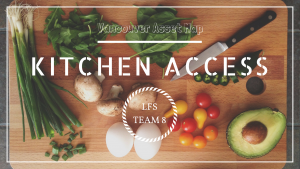 From the beginning of the project to where we are now, a lot has changed. In the following blog post, we will discuss some moments of significance and their effects on us and the project as a whole.
From the beginning of the project to where we are now, a lot has changed. In the following blog post, we will discuss some moments of significance and their effects on us and the project as a whole.
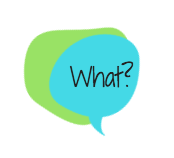 A recurring theme seemed to be balancing our project goals and what was actually realistic. Our primary example is the deliberation of a second trial. Communication with our community partner was at times difficult as many days would pass without a reply and then we would be asked to come trial the map on very short notice. We acknowledge the busyness of our partner, but also recognized that as students with own time restrictions, we cannot always accommodate everyone. As a team we decided that one trial was enough, and confirmed with Vancouver Coastal Health to ensure this wouldn’t be a problem. We also came across certain barriers in the data collection part of our project. This is due to the difficulty in contacting the assets, as some did not respond to emails or several attempts by phone were unsuccessful. In addition, we found that some places did not want to offer or were hesitant to offer their kitchens for public use. As a result, we did not hit our target date for completion.
A recurring theme seemed to be balancing our project goals and what was actually realistic. Our primary example is the deliberation of a second trial. Communication with our community partner was at times difficult as many days would pass without a reply and then we would be asked to come trial the map on very short notice. We acknowledge the busyness of our partner, but also recognized that as students with own time restrictions, we cannot always accommodate everyone. As a team we decided that one trial was enough, and confirmed with Vancouver Coastal Health to ensure this wouldn’t be a problem. We also came across certain barriers in the data collection part of our project. This is due to the difficulty in contacting the assets, as some did not respond to emails or several attempts by phone were unsuccessful. In addition, we found that some places did not want to offer or were hesitant to offer their kitchens for public use. As a result, we did not hit our target date for completion.
While we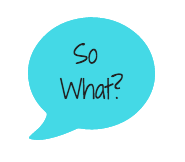 acknowledge that this project relied on self directed project development, the basis of community based projects imply reciprocal support and contribution. During this process, we did not feel like we were being supported. As we have mentioned before, communication was an issue when working with our community partner. A higher degree of collaboration should have been more present, and we take ownership for not instigating an in-person meeting. This lack of communication led to differing and unclear expectations of each other—we expected the community partner to be more receptive and accommodating. Likewise, they requested us to take on other tasks with their community projects which led us to believe that they also had different expectations of us. This miscommunication and misunderstanding is something that is likely to arise in any community based project, but nonetheless created a sense of frustration. Mutual understanding of each other’s goals for a project is key before effective collaboration can occur.
acknowledge that this project relied on self directed project development, the basis of community based projects imply reciprocal support and contribution. During this process, we did not feel like we were being supported. As we have mentioned before, communication was an issue when working with our community partner. A higher degree of collaboration should have been more present, and we take ownership for not instigating an in-person meeting. This lack of communication led to differing and unclear expectations of each other—we expected the community partner to be more receptive and accommodating. Likewise, they requested us to take on other tasks with their community projects which led us to believe that they also had different expectations of us. This miscommunication and misunderstanding is something that is likely to arise in any community based project, but nonetheless created a sense of frustration. Mutual understanding of each other’s goals for a project is key before effective collaboration can occur.
A further result of our communication issues resulted in an inability to attend a second trialling session. We were unable to gather the amount of information that we wanted, and did not receive an evaluation from our community partner either, which was an opinion that would have been incredibly valuable. In addition, our collected data may present as less valid because we do not have a standard demographic. In the words of Lee Shulman (2005), “part of what we have to learn, we must learn from one another within the universities and colleges” suggesting that some of the most important information comes from peer collaboration.
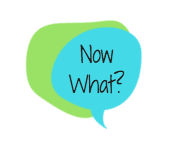
Moving forward, there are a few things we would do differently to make the project run smoother. First would be to properly establish the role of the community partner and clearly define mutual expectations. We would first plan an initial face to face meeting with Joanne to gain a better understanding as more collaboration was definitely needed, and find out what the best method to communicate with her would be as emails were very slow. We started the project with high expectations but it gradually decreased as we faced confusion and uncertainty through the project process. We feel that there was a huge disconnect between our group and the community partner and because of this, we hit roadblocks. Establishing an efficient communication method would have prevented this.
We would also change our approach to contacting the food assets as many did not end up responding to our emails and phone calls. Something that our group member, Joy, brought up was that the community centers did not express welcoming invitation to their kitchens as many were just reserved for staff members and not for use of the food insecure. However, we think perhaps if we made it more clear that the intention of the map was to see what kitchens and resources are out there instead of making it seem like the food insecure would invade their space, then they would be more willing to share information about their space. Perhaps, physically going to the food assets and community kitchens to talk to them in person would have worked better. However, we understand that this would not be viable because of time constraints. Regardless of these consideration, we found that visiting the Nat Bailey farmer’s market to trial and receive feedback for the map was a valuable experience. We regret not being able to interact with more community members and receive more responses. Having more responses would have given Vancouver Coastal Health more reliable feedback to improve the mapping tool. Moving forward, the map should continue to be tested out by community members. Along with gathering more feedback, trialling sessions would promote the tool and increase its usability.
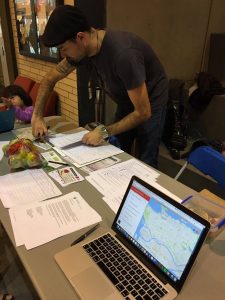

We value the experiences that we gained through this project. As a group, we learned how to engage with community partners and build skills that we will use in future projects in our respective fields. We learned that working with the community meant that we had to be adaptable and accommodating. We need to have a clear understanding of our tasks and be able to answer questions. Our group, with each individual member with a different background, were able to complete our project and solve our challenges by putting in hard work and diverse individual expertise. Phillips (2014) states in her article that a group of diverse people are more open minded and capable of solving tough challenges. Through frustration and through downfalls, we were able to analyze and evaluate the food asset map as a community tool. We were forced into sending several emails to stakeholders to find answers to our uncertainty. Like Steven Levitt argues in the podcast Failure is Your Friend, through failure, success will eventually emerge.
Vision for the Future:
In our group, our collective vision is to ideally have this map contribute to creating food security in Canada and that it will be a tool people can use to look up food resources in their community. We also have individual visions of where we hope to see the map progress. Our group member Raihan would like to see more community partners take initiative of keeping the map up to date and recommending its use to other community members. Similarly, Taylor would like to see more community members actively involved in the development, and upkeep of the map. Carmen and Sze Yiu would like to see the map be regularly revised and updated with the most current information regarding the food assets. Joy would like to see more food assets being utilized by community members and a greater community initiative to promote food security. Ilan would like to see this map encompass food related events as well as emergency food access. He would also suggest a strategy be put in place to monitor the effectiveness of the map after its implementation.
References:
Cohn, G. (2015, May 20). Failure is Your Friend. Retrieved from http://freakonomics.com/podcast/failure-is-your-friend-a-freakonomics-radio-rebroadcast/
Phillips, K. W. (2014). How Diversity Makes Us Smarter. Retrieved August 24, 2016, from http://www.scientificamerican.com/article/how-diversity-makes-us-smarter/
Shulman, L. S. (2005). Pedagogies of uncertainty. Liberal Education, 91(2), 18–25. Retrieved from http://files.eric.ed.gov/fulltext/EJ697350.pdf